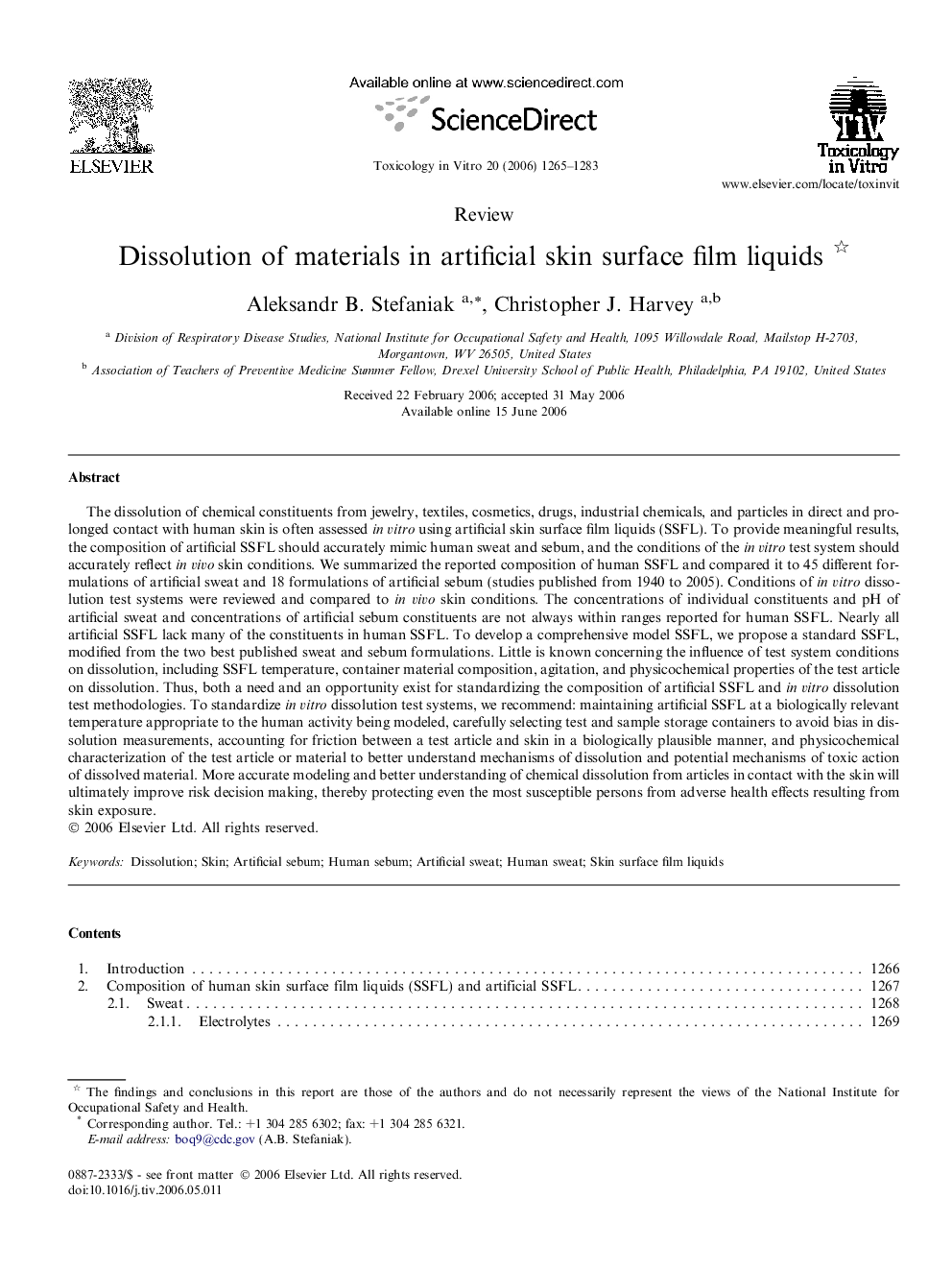| Article ID | Journal | Published Year | Pages | File Type |
|---|---|---|---|---|
| 2603568 | Toxicology in Vitro | 2006 | 19 Pages |
The dissolution of chemical constituents from jewelry, textiles, cosmetics, drugs, industrial chemicals, and particles in direct and prolonged contact with human skin is often assessed in vitro using artificial skin surface film liquids (SSFL). To provide meaningful results, the composition of artificial SSFL should accurately mimic human sweat and sebum, and the conditions of the in vitro test system should accurately reflect in vivo skin conditions. We summarized the reported composition of human SSFL and compared it to 45 different formulations of artificial sweat and 18 formulations of artificial sebum (studies published from 1940 to 2005). Conditions of in vitro dissolution test systems were reviewed and compared to in vivo skin conditions. The concentrations of individual constituents and pH of artificial sweat and concentrations of artificial sebum constituents are not always within ranges reported for human SSFL. Nearly all artificial SSFL lack many of the constituents in human SSFL. To develop a comprehensive model SSFL, we propose a standard SSFL, modified from the two best published sweat and sebum formulations. Little is known concerning the influence of test system conditions on dissolution, including SSFL temperature, container material composition, agitation, and physicochemical properties of the test article on dissolution. Thus, both a need and an opportunity exist for standardizing the composition of artificial SSFL and in vitro dissolution test methodologies. To standardize in vitro dissolution test systems, we recommend: maintaining artificial SSFL at a biologically relevant temperature appropriate to the human activity being modeled, carefully selecting test and sample storage containers to avoid bias in dissolution measurements, accounting for friction between a test article and skin in a biologically plausible manner, and physicochemical characterization of the test article or material to better understand mechanisms of dissolution and potential mechanisms of toxic action of dissolved material. More accurate modeling and better understanding of chemical dissolution from articles in contact with the skin will ultimately improve risk decision making, thereby protecting even the most susceptible persons from adverse health effects resulting from skin exposure.
